Let’s look at some maps
Last week I was in the middle of writing a post about how great this year was turning out. I thought, just as long as growers can avoid something disastrous, this could be a great vintage. Within 24 hours, the Pickett fire grew from a small blaze north of Calistoga to a towering wildfire that has since consumed 6000 acres.
Of course, this comes on the heels of the Gifford fire in San Luis Obispo, which has taken out over 100k acres the week before. For some growers in Napa and Edna valley, harvest may be over before it starts. While the definitive kibosh will come from lab analysis, knowing how smokey it got and when is useful for metering expectations and determining the next step.
And there are some super useful tools out there! The EPA has a wide network of air quality sensors throughout the country with varying degrees of concentration. The map below shows just how many of these stations are publicly available, so you can see where air quality is suffering the most.
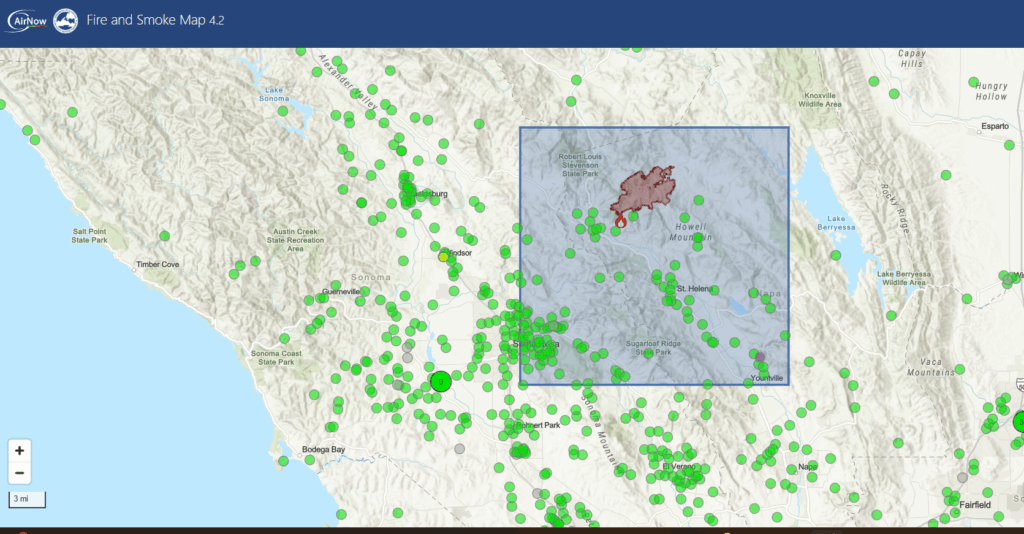
So what is AQI?
The immediate snapshot this resource gives you is the Air Quality Index. This is an index released by the EPA that takes into account several key pollutants:
- Ground level Ozone: primary component of smog
- PM2.5: inhalable fine particles that are 2.5 micrometers in diameter or less.
- PM10: inhalable coarse particles that are 10 micrometers in diameter or less.
- Carbon monoxide: Product of combustion of fossil fuels from vehicles or industry.
- Sulfur dioxide: Reactive gas from combustion of fossil fuels, namely power plants.
- Nitrous dioxide: Another reactive gas from combustion of fossil fuels.
The scale goes from 0 to 500, with anything above 100 considered unhealthy for sensitive groups such as those with asthma. Anything above 150 is classified as unhealthy for everyone.
What we consider when it comes to smoke taint however, is primarily PM2.5, that is, very fine particles. Did your vineyard experience a spike in PM2.5? You are more likely to find smoke taint if you did.
As I write this blogpost at 10pm on a Thursday night, all the dots you see are green, meaning that the AQI is between 0 and 50. Having better AQI at night is pretty typical. We want to know the highs and lows during the day though. Luckily each of these dots gives you hourly and subhourly information on how AQI and PM2.5 have cycled over the last few days.
The EPA also releases this fire-specific information in map form.
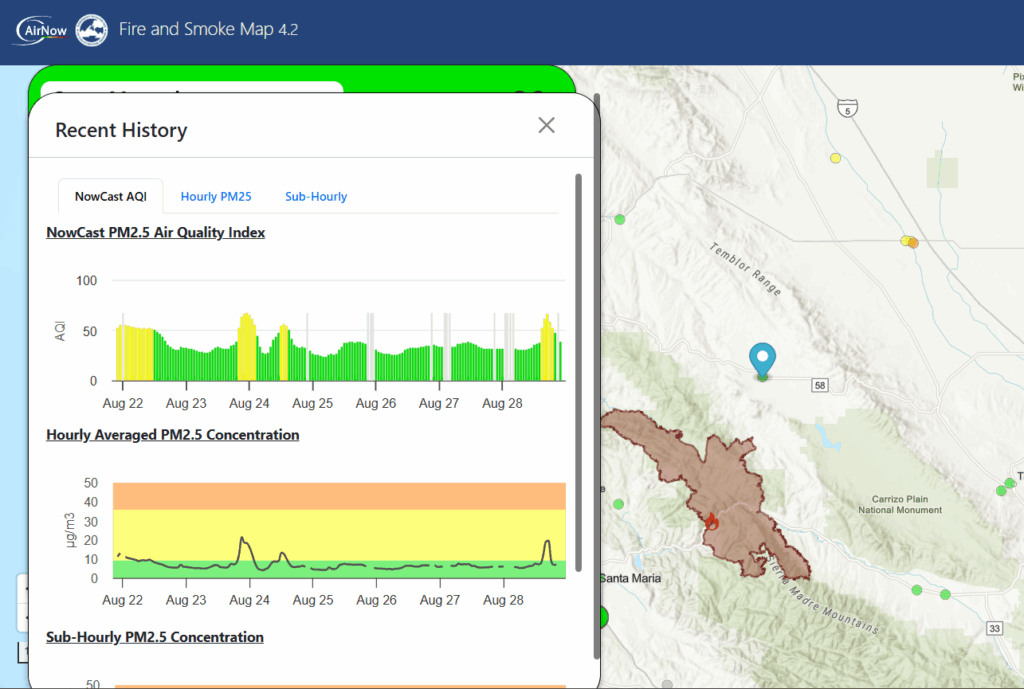
They also display information from the Interagency Wildland Fire Air Quality Response Program, which gives information specific to any given fire. Below we have the areas affected by the Pickett Fire in Calistoga, Deer Park, Angwin, and Pope Valley.
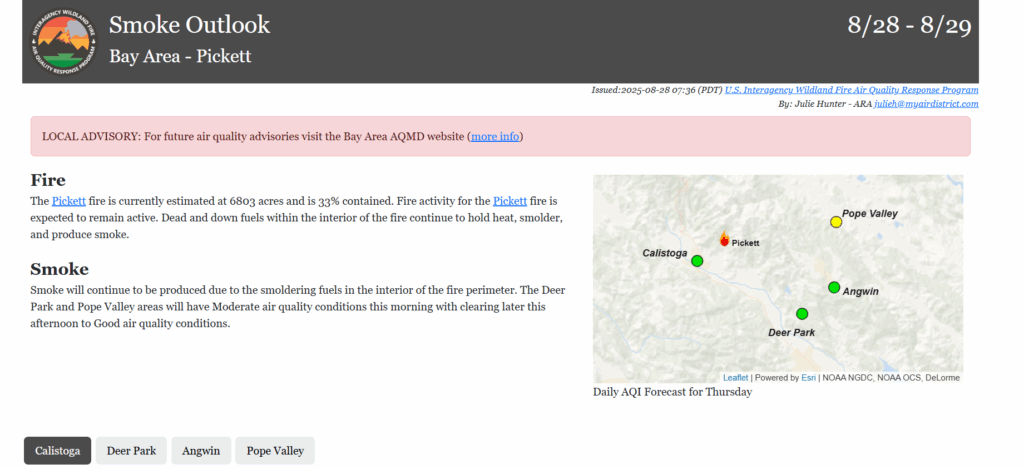
The EPA’s website gives you not just air quality but also charts ongoing AQI and PM2.5. The below information is from the reference station in Calistoga. This tracks air quality from the start of the fire onwards.
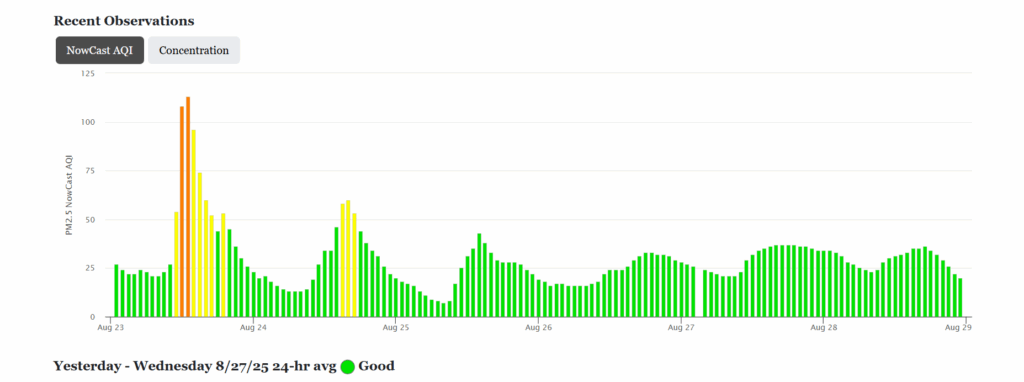
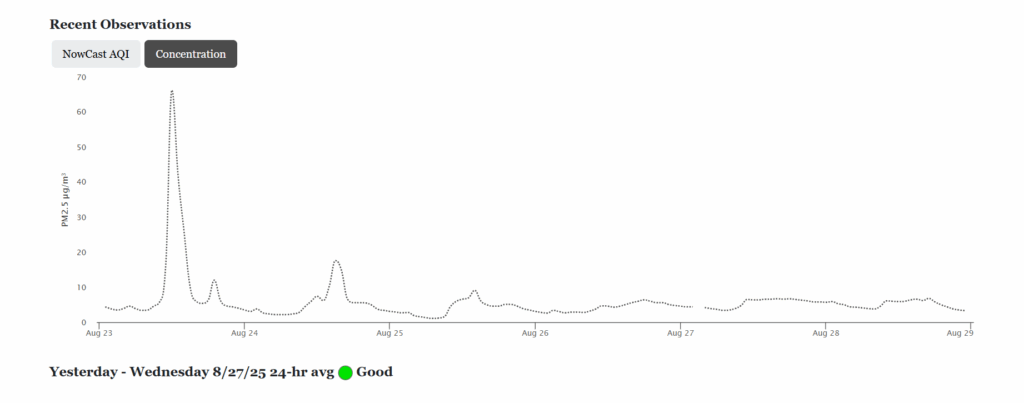
Reference stations are more common in some areas than others. The North Coast has hundreds of these stations available and fewer as you move south. The best way to track your own air quality is by getting your own sensor.
The EPA’s network is largely made up of Purple Air sensors, which are fairly inexpensive and allow you to share your information with the EPA for better monitoring and modeling. These start at just $139.
Alternatively, Davis Instruments offers the Airlink AQ sensor for just north of $200. This provides PM1 (1 micrometer and smaller), PM2.5, and PM10, in addition to AQI. This will display alongside your weather data if you happen to already have a Davis station.
As a caveat, these stations both require Wifi and AC power.
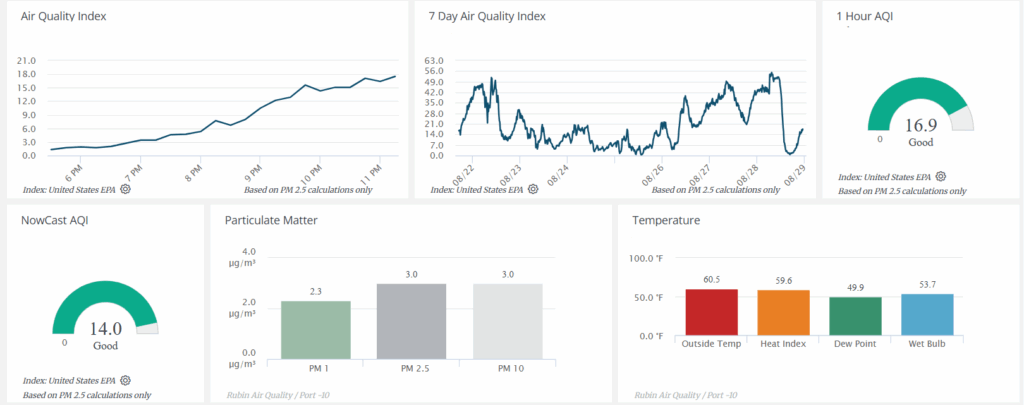
As things keep burning here on the West Coast, this is definitely a worthy investment. Otherwise, the publicly available information provides some fun resources to nerd out over as you await your lab results.
Happy picking! Or y’know, not.

